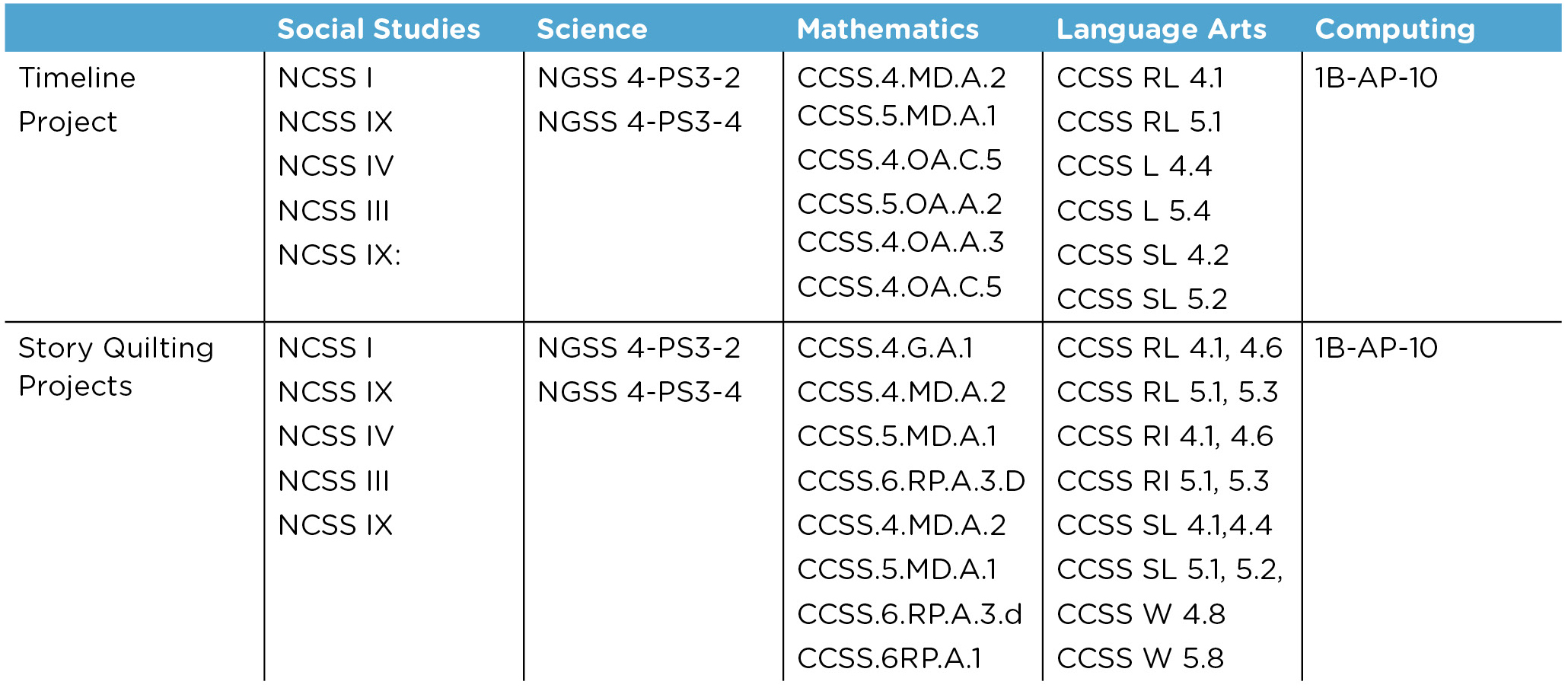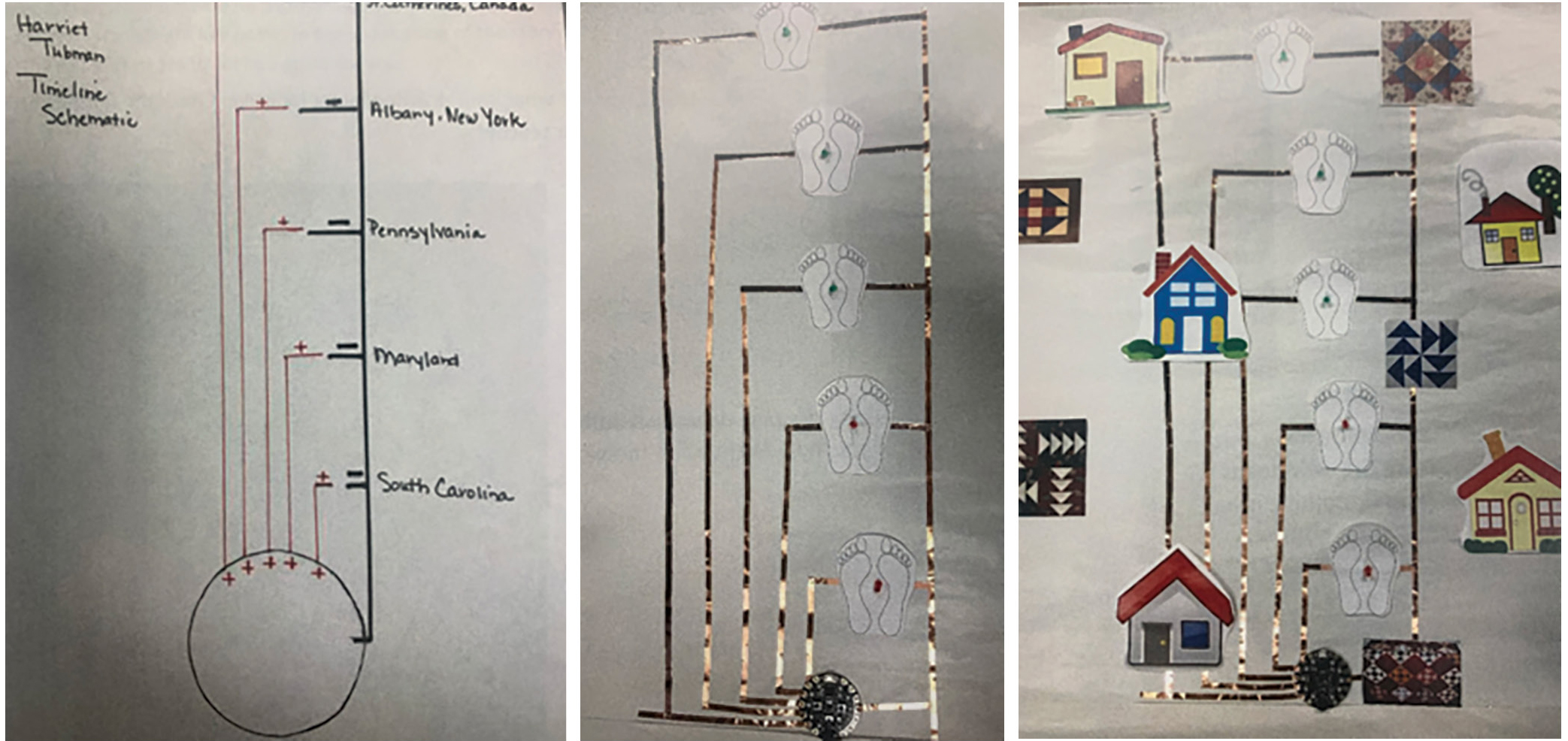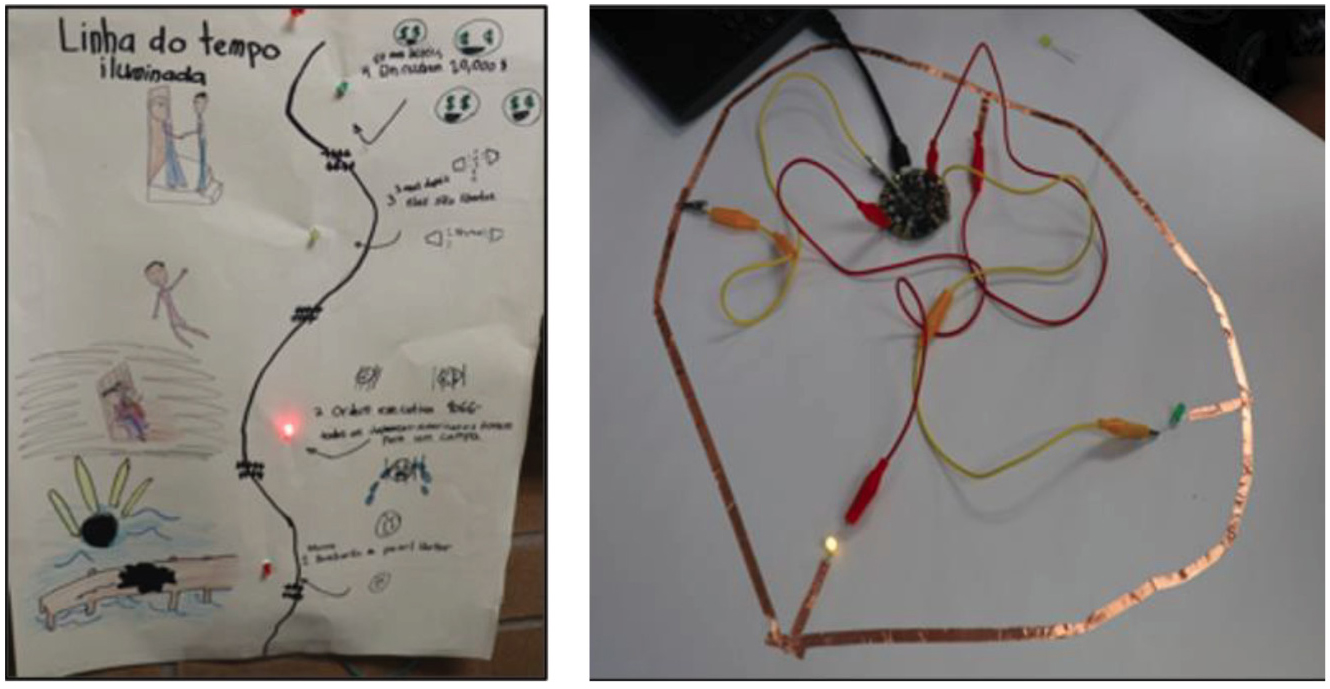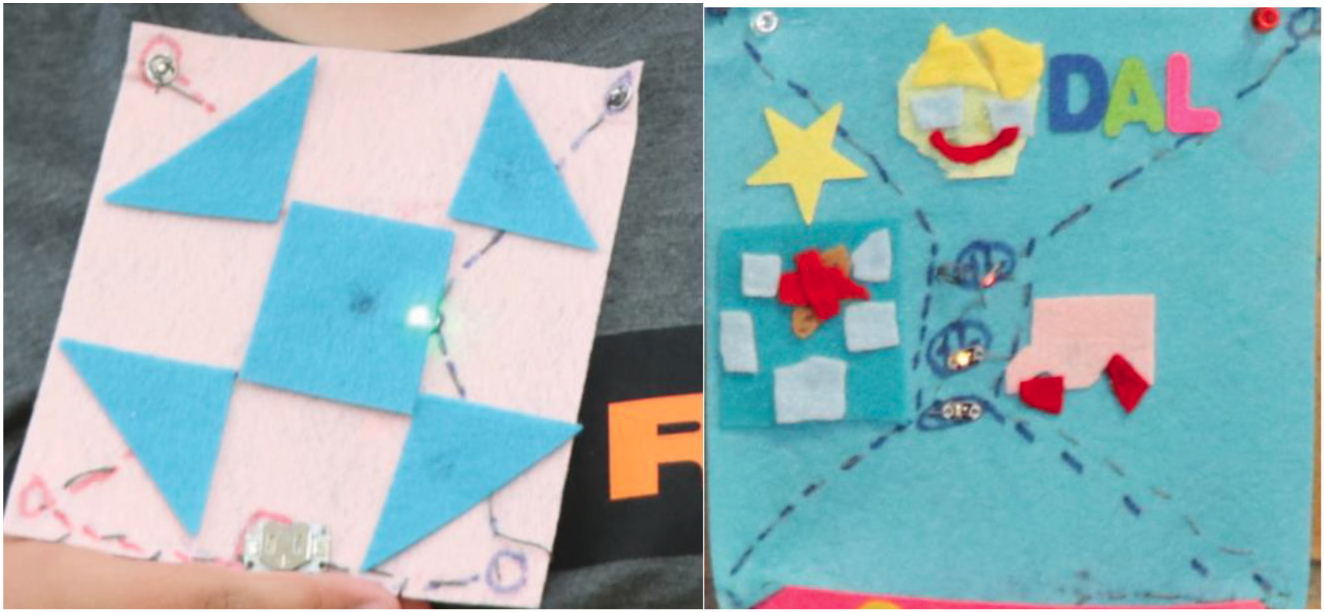cross-curricular connections
Crafting Circuits
Integrating culturally responsive teaching and current events into science
Science and Children—March/April 2021 (Volume 58, Issue 4)
By Colby Tofel-Grehl, Kristin Searle, Andrea Hawkman, Tyler Hansen, and Kimberly Lott
While the majority of young children’s teachers in the United States are white (78%) and female (99%), the general population of the United States is more diverse than ever (Saluja, Early, and Clifford 2002). Teachers wishing to bridge the gap between themselves and their students must engage in teaching different perspectives, histories, and stories than the ones they learned growing up. Meaningful differentiation and culturally responsive teaching allow teachers and students to explore why science is taught as it is, who tells the stories of science, and who wrote the stories of science we share. Elementary teachers are in the unique position of teaching content across subject areas, which affords them the opportunity to create meaningful and culturally responsive teaching moments through integrated projects.
Crafting circuits are a set of multidisciplinary projects teachers can use to integrate science into social studies and language arts instruction. With paper or fabric as a base, students are able to create their own circuits with supplies like batteries, conductive thread or tape, LEDs, and microprocessors. Conductive thread or copper tape can be used in order to carry an electrical current from the battery to other electrical components, such as LED lights. These crafting circuits can include microprocessors, which can be programmed to perform various functions, such as lighting LEDs in a sequence. With these components, students can make their own unique projects. Everyday materials such as cards, posters, and clothing can all become working circuits. In this article, we share details of two such projects. The first is a computational timeline, which is a programmed or computerized timeline that lights up based on programmed directions coded by the student. The second is a computational quilt square, which is a sewn quilt square that can be programmed to work in conjunction with peers’ squares. Teachers can engage students in retelling stories from texts, as detailed in the timeline project, or showcasing social studies content, as shown in the quilting project. Both projects anchor cross-curricular learning in energy and circuitry based projects to facilitate integrated learning in the elementary classroom.
The open-ended nature of crafting circuits allows teachers to facilitate learning in a way that encourages student creativity and inquiry. While the typical battery-and-lightbulb method of teaching circuits has students piecing together pre-designed circuits, crafting circuits give students the ability to create a final product that is from their own design. While students are not designing to “fix” a problem, the limitless solution paths afforded students to design their own sewable circuits presents them with many of the same problem solving and engineering challenges seen in typical engineering design tasks. However, because these crafting circuits can be applied to creating projects for different areas of the curriculum, they present a unique opportunity to engage science in the service of culturally responsive teaching.
The Project
This article shares the Paper Circuit Story Timeline and the Story Quilting project from the Elementary STEM Teaching Integrating Technology and Computing Holistically (ESTITCH) curriculum, a free curriculum and project guide set for grades 3–6 (https://chaoslearninglab.weebly.com/project-e-stitch.html). The E-STITCH curriculum is designed as a method for teaching science and social studies together in order to teach both in more culturally responsive and inclusive ways. Students learn science content around energy transfer and circuits as a means to produce projects that highlight their social studies learning about immigration, migration, and forced relocation—topics that are relevant to children living across the United States.
We recommend students be grouped in teams of three to five for these projects; this allows for rich collaboration and discussion. Project complexity and timeframe can be modified as needed; however, we recommend two to three one-hour class periods/sessions per project. The following outlines how these projects were implemented as part of an energy transfer unit within a fourth-grade classroom, but they can be easily modified to meet the needs of students in grades 3–6. Prior to implementing these projects, students had already engaged in lessons around circuits and electricity (for more information on these lessons please visit https://chaoslearninglab.weebly.com/project-e-stitch.html). Students learned about what makes a circuit work, how energy flows through a circuit, and different types of circuits. The projects outlined here are aligned to the grade 4 NGSS standard 4-PS3-2: Make observations to provide evidence that energy can be transferred from place to place by sound, light, heat and electric currents (NGSS Lead States 2013). These projects are also aligned to the National Social Studies Council’s standards 5.1.1.a. and 5.4.3.a. Table 1 lays out the cross-curricular standards addressed by the E-STITCH project including Common Core Mathematics, Common Core Language Arts, Computer Science Teachers’ Association Standards, Standards of the National Council for the Social Studies, and the Next Generation Science Standards. See Figure 1 for a complete list of supplies and approximate costs associated with these projects.

Cross-curricular standards covered by E-STITCH projects.
Supply list
Timeline
- 1-piece of Butcher paper or poster board
- 4 feet of copper tape*
- 3–5 LED bulbs*
- 1 microprocessor*
- 1 battery for the microprocessor *
- 1 connector cable for microprocessor*
Story Quilts (per quilt square)
- 1 Coin cell battery
- 1 Coin cell battery holder*
- 3 Sewable LED*
- 2 Pairs of metal snaps
- 10 feet of conductive thread cut into two 5-foot pieces
*available in hardware stores or online
Nearly any sewable microprocessor will work for this project; both Adafruit and Lilypad microprocessors have been tested successfully in classrooms.
Cost for consumable/ not reusable supplies are approximately $2 per group of 3–5 students. Microprocessors and associated supplies (batteries and cords) are approximately $25 per group of 3–5 students but can be reused annually.
Safety
Do not allow students to use sharps without appropriate personal protective equipment; e.g., eye protection, gloves, etc. and under direct adult supervision.
Engaging With Multicultural Literature
The teacher started by reading aloud the book We Came to America by Faith Ringgold (2016). This picture book explores the various ways that humans have moved throughout American history. These ways include immigration, migration, and forced relocation. By engaging in multicultural children’s literature, students can explore windows—stories that feature the cultural experiences of others; mirrors—stories that reflect students’ own identities and experiences; or sliding glass doors—stories that allow students to enter new worlds (Bishop 1990). For students, experiencing the idea that literature has a place in a science classroom can be surprising. As one student said, “we never read stories in science.”
Students were then asked to think about different types of human movement. They worked in groups to read books of their choosing from a list provided (one book per group) that tell stories of human immigration, migration, or forced relocation. For example, stories might focus on the internment of Japanese Americans during World War II, the Great Migration of Black Americans from the Southern United States during Jim Crow, or the Long Walk of the Navajo during the forced relocation of Native American people during the 1800s. Listed story books (see Resources) were selected based on two primary criteria: (1) telling a story of human movement and (2) the author had to identify as a member of the group about whom the story was being told. Students identify the key events from their piece of literature that they wanted to represent on a computational circuit timeline. A worksheet entitled “The Timeline Builder” can be found in Internet Resources to help scaffold student construction of their timelines.
Building a Computational Timeline
First, teachers engaged students in learning about circuits and how electrons stored in the battery can be converted into light energy. There are many ways that teachers can do this with students. Crafting circuit materials make rapid prototyping of circuits easy and affordable. Teachers can have students use copper tape to construct a basic circuit made from a coin cell battery, copper tape, and an LED. Discussions with students at this point are used to help students understand that something unseen is happening; specifically, teachers draw student attention to the fact that light cannot be emitted without the battery and the conductor. We shared with students how electrons move through the conductor and are funneled through the single lightbulb. As students begin to explore this, teachers can have students rapidly make prototypes of different types of circuits including series and parallel. Discussions at this point can focus on why a series circuit with two lights cannot be lit by a single cell battery, while a parallel with three bulbs can be. Teachers can also discuss short circuits during these rapid “prototyping” explorations. These explorations will be critical to helping students later on in debugging and problem-solving. After students explore the phenomena around energy transfer, they can move on to applying their knowledge to their projects.
Second, teachers divided students into groups, and each group selected a book to read from the list. Once groups had read their books, each group identified three to five key events from its book and workshopped how to represent those events on the timeline. This workshopping process involved students engaging in reasoning and argumentation as they articulated to their peers why they selected the key moments they did. These workshop conversations can have students rank events and vote on the most important topics. Teachers can support these conversations by directing students to select key events, explain what about the events is important, and find ways to compare and contrast the importance of events to determine which are essential for inclusion in the timeline. The process of selecting key events from these texts is central for students’ literacy development, further supporting the interdisciplinary nature of the project.
From this list of events, students drew an artistic design drawing to help guide their construction of their circuit. After having a visual model of the aesthetic aspects of their timeline, groups drew a schematic drawing of the circuit that delineated the positive and negative leads as well as what ports connect from the microprocessor to the LED (see Figure 2).

(L to R): A circuit plan drawing, a completed circuit with copper tape connected to the microprocessor, and a fully decorated timeline.
The computational circuits were constructed using butcher paper, LED lights, copper tape, a battery, and a microprocessor. Once both the artistic and circuit drawings were complete, students attached their microprocessor (we suggest using Circuit Playground Express [CPX] because of the compatibility with Makecode.com, a block coding language that is very easy to use) to the timeline using scotch tape. Students’ computational circuits will include a single negative line that will connect all of the negative leads from the lights for their circuit back to the CPX and individual positive lines for each bulb that will connect back to separate ports on the CPX and allow for programming.
Finally, students used the copper tape to make the negative line. Following the schematic, they laid down the piece of copper tape for the negative line from the microprocessor to the end of the circuit. Then students connected each port/ pin on the microprocessor to each point on their timeline that they wished to showcase as part of the story. Students then used a USB cable to connect their microprocessor to a computer and programed their microprocessor with a sequential blinking pattern for the events on their timeline, causing each light to blink in the sequence in which events occurred in the book. Safety Note: While students do not typically injure themselves, it is always important to follow all school and district safety guidelines. The main safety concern we have noted with students is the possibility of getting a paper cut working with the copper tape. Students should be made aware of this and told to work with care.
When completed, these computational timelines allow students to sequentially light up a series of lights to showcase the key events in the story. The circuits use lights as the representation of the historic passage of time, allowing students to engage in the sequence and magnitude of the changes in human movement across history. Sharing the group timelines in an oral presentation is a wonderful way to allow students to explain their design while retelling the events from their book.
In the examples shown in Figure 3, the students engaged in developing and constructing a circuit that illuminates an LED when a button is pushed. It was through the use of literature and storytelling that the science content became relevant to students’ lives. Students remarked how they needed to learn the science of cirucits to tell the stories that they learned, which in some cases mirrored their own. While students did not engage in engineering design to “fix” a problem as is typical with engineering challenges, they did need to make design and engineering decisions in order to complete projects that represent the stories they are telling. This opportuntity allowed students to meaningfully and tangibly engage with their science learning to construct a project of meaning to them.

A completed timeline, including the circuit view.
Constructing Story Quilts
After making computational timelines that provided windows and mirrors into different groups’ experiences, students engaged in sewing electronic textile (e-textile) circuit squares that showcased the active role of women as abolitionists. Based on oral histories from North Carolina, students learned about the roles of women, and particularly women of color, in sewing a series of secretly coded quilts that provided information to people moving toward freedom along the underground railroad. By using simple circuits with a battery holder, conductive thread, and a single LED, these quilt squares were not only a perfect introduction into sewing circuits that deepened understanding energy transfer (see Figure 4) but also gave voice and representation to women and people of color in the fight against slavery in a way not traditionally explored.

Student constructed quilt square and meaningful moment square depicting her family’s migration to the United States.
After constructing one of the abolitionist quilt squares, students then designed and constructed a “Meaningful Moments Quilt Square” that represents a key moment in their life. For this project, students needed to decide how many lights and where to position them. This allowed students to explore short circuits, issues of polarity, and resistance while sharing their personal history. For some students, this was an opportunity to share a moment from their own personal migration story; for others, they opted to share a meaningful moment from their own life.
Assessment
The Timeline and Quilting Projects both work well for summative and formative assessment. Formative assessment practices are used throughout the projects to inform the teacher of areas where students need additional support. While we prefer to focus on formative assessment that informs practice, these projects also lend themselves to meaningful summative assessment. Most classes conducted a summative sharing of projects so that students could share both their project design and construction, focusing on the science and engineering involved, and a telling of their own stories, allowing students to share meaningful moments from their own personal history or migration story.
Conclusion
As our schools move toward more diversity, it is important that our curriculum reflect students’ histories and also provide opportunities for them to engage with differing perspectives. By completing these projects, students were able to use the science learned about circuits to create visual displays of culturally relevant content. By completing the paper circuit timeline, elementary students were able to engage with books written by authors of color about communities of color. These texts added to existing perspectives that are common in elementary school classrooms about the immigration of White Europeans. Story quilts allow students to learn about the important role of women of color in fighting slavery as well as bring their own personal stories to school. By integrating content across the elementary classroom, teachers leverage interest in both science and social studies toward improved learning of both.
Acknowledgment
The authors gratefully acknowledge the support of the National Science Foundation. This material is based upon work supported under awards 1758823 and 1542801. Any opinions, findings, and conclusions or recommendations expressed in this material are those of the authors and do not necessarily reflect the views of the NSF.
Resources
Cornelissen, C. 2009. Soft rain: A story of the Cherokee Trail of Tears. San Francisco: Yearling Publishing.
Edwidge D. 2015. Mama’s nightingale: A story of immigration and separation. New York: Penguin Publishing.
Kroll, V.L. 1992. Wood-hoopoe willie. Boston: Charlesbridge Publishing
Lee-Tai, A. 2006. A place where sunflowers grow. Washington DC: Children’s Book Press.
Ringgold, F. 2016. We came to America. Chicago. Knopf Books for Young Readers.
Woodson, J. 2005. Show way. New York: Penguin Publishing.
Woodson, J. 2017. This is the rope: A story from the Great Migration. New York: Penguin.
Colby Tofel-Grehl (Colby.tg@usu.edu) is an associate professor, Kristin Searle is an assistant professor, Andrea Hawkman is an assistant professor, Tyler Hansen is a master’s student, and Kimberly Lott is an associate professor, all at Utah State University in Logan, Utah.
Engineering Makerspace Teaching Strategies Elementary


